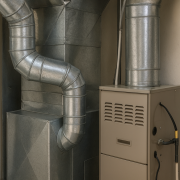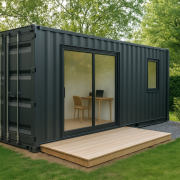House clearance is one of those tasks that most Singaporeans will face at least once in their lives, yet few people prepare adequately for the emotional and logistical challenges it presents. Whether you are dealing with the estate of a deceased relative, downsizing to a smaller flat, or simply decluttering years of accumulated possessions, the process demands far more than just hiring a lorry and moving things out. It requires planning, patience, and often a willingness to confront memories you may have buried for years.
The Reality of Clearing a Home
The scale of the task only becomes apparent when you begin. A typical three-room HDB flat in Singapore might seem manageable until you start opening cupboards, sorting through storage boxes, and discovering items tucked away in forgotten corners. Most households accumulate between 200 to 300 individual items per room, and that figure does not account for clothing, books, or kitchen equipment. The job grows exponentially when dealing with larger properties or homes where elderly relatives have lived for decades.
In Singapore’s context, house clearance must also comply with specific regulations. The National Environment Agency requires proper disposal of bulky items, and certain materials cannot simply be thrown into general waste. E-waste, for instance, must be handled through designated recycling programmes, whilst furniture disposal requires booking of the town council’s bulky waste collection service or engaging licensed waste collectors.
When House Clearance Becomes Necessary
Several situations typically trigger the need for clearing out a property:
- Death of a family member, particularly when the deceased lived alone or accumulated possessions over many years
- Relocation to smaller accommodation, common among retirees moving from larger flats to studio apartments or elderly care facilities
- Emigration, requiring the complete emptying of a property before tenancy ends or sale completes
- Hoarding situations, where intervention becomes necessary for health and safety reasons
- Divorce or separation, necessitating the division and removal of shared possessions
Each scenario carries its own emotional weight. The house clearance process after a bereavement, for example, forces family members to make decisions about possessions whilst still grieving, creating additional stress during an already difficult period.
The Hidden Costs Nobody Mentions
Beyond the obvious expenses of hiring help or renting vehicles, property clearance work involves costs that catch people unprepared. Storage fees accumulate quickly if you cannot immediately decide what to keep. In Singapore, a modest storage unit measuring 20 square feet costs between 80 and 150 dollars monthly, and that figure rises sharply for climate-controlled spaces needed for sensitive items like photographs or documents.
Time represents another significant cost. A thorough clearance of a three-room flat typically requires 40 to 60 hours of work, spread across multiple days or weekends. For working professionals, this means taking leave or sacrificing personal time. The process cannot be rushed without risking the disposal of valuable or sentimental items.
There is also the opportunity cost of items with potential resale value. Furniture, electronics, collectibles, and even vintage kitchenware can fetch reasonable prices through online marketplaces or second-hand dealers, but only if someone invests time in photographing, listing, and negotiating sales. Many people, overwhelmed by the scale of the task, simply discard items that could have offset clearance expenses.
Making the Process More Manageable
Approaching residential clearance systematically makes an overwhelming task achievable. Start by categorising everything into four groups: keep, sell, donate, and discard. Be ruthless with the first category. Ask yourself whether you have used the item in the past year and whether it holds genuine sentimental value or merely represents clutter you feel guilty discarding.
For items worth selling, online platforms like Carousell or Facebook Marketplace work well for furniture and electronics. Specialty dealers handle specific categories such as vintage items, books, or collectibles. Charitable organisations throughout Singapore accept donations of clothing, household goods, and furniture in reasonable condition, providing both social benefit and potential tax deductions.
The Singapore government provides several channels for proper disposal. The town council’s bulky waste collection service handles large furniture items, though booking may require several days’ notice. Electronic waste can be deposited at designated e-waste recycling bins located in many housing estates, ensuring hazardous materials are processed correctly.
The Emotional Journey
What surprises most people about clearing properties is the emotional toll. Sorting through a lifetime of possessions means confronting memories at every turn. A wedding photograph, a child’s school report, a postcard from a long-ago holiday – each item triggers recollections and decisions about what deserves preservation.
This emotional dimension explains why many people abandon the task halfway through or make hasty decisions they later regret. The solution lies in pacing yourself and accepting that the process cannot be completed in a single weekend. Schedule regular breaks, involve family members in decisions about shared memories, and recognise that some items matter more than logic suggests they should.
Moving Forward
The house clearance journey, though demanding, ultimately provides an opportunity for closure and fresh beginnings. By approaching the task methodically, respecting both practical requirements and emotional needs, and understanding Singapore’s specific disposal regulations, you can navigate this challenge successfully. Whether you face this task tomorrow or years from now, understanding the realities of house clearance helps transform an overwhelming obligation into a manageable project.











Comments